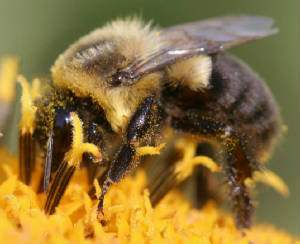|
|
* Separateness and Awareness * Our perspective is that there are solid and separate things each with an independent existence.
We experience ourselves as existing as an independent and completely separate being. . Whilst this is true in terms of how we interact
with each other and true in how we each take in energy separately as food and process it separately within our bodies - we
are not ultimately separate at all. . Consider a flower. Now, flowers do not exist floating in nothingness. They
exist only where there is soil of a certain type, where there is water in a certain amount, and with sunlight of a certain
duration and intensity. . These things all go with each other. They are a system, a unified field, what
you could call a flower/soil/water/sun, an organism/environment. But notice that we could also add a bee to our system, since bees do not exist where there are no flowers, and flowers
do not exist where there are no bees. They are really one thing, and they cannot exist in isolation. , And we could keep adding things,
until we had added everything.We could also add that the field and the sky are really part of the same system, and the sky and outer
space are connected and part of the same system, and so on and so on. Any division you make, any distinction you make, is
arbitrary. . That isn`t to say to make divisions and distinctions is not necessary and useful. Apart from anything
else we need to do that to have a system of communication between us. But what is important is that we are aware that
whenever we talk about anything we are talking about only a part of the complete picture. Just like if
we talk about a bee, it is useful to be able to do so, but in so doing we cut out a mass of the detail concerning a greater
and broader reality. . Each
individual cell in your body can go around saying it`s independant from every other cell --- it takes in food, it converts
it and nourishes itself and reproduces. Sound familiar? . Bees View Flowers in Different Colours
Bees see some flowers in multicolour because of previously unknown iridescence of the petals, usually invisible to the human eye. Iridescence is used by insects, birds,
fish, and reptiles for species recognition and mate selection. However, this is the first time that it has been shown that
plants use iridescence to attract pollinators. Bees see an iridescent flower in different colours depending on the angle from
which it is viewed. Flowers
were previously believed only to use chemical colours, where a pigment absorbs all wavelengths except a few, giving them their
apparent colour. . Because most of the petal iridescence measured is at the ultraviolet end of the spectrum, which insects can see but humans cannot, this raises the intriguing possibility that many flowers are actually iridescent although they do not appear so to the human eye. . Dr
Glover of Cambridge University said: "Our initial survey of plants suggests that iridescence may be very widespread.
From gardening to agriculture, flowers and their pollinators play an enormously important role in our daily lives, and it is intriguing to realise that they are signalling to each other with flashing multicolours
that we simply can't see."
 Honeybees: the invisible link to our
food supply When entire bee populations seem to disappear or die out in alarming
numbers, ramifications can be astounding. Bee pollination, which most farmers depend on, is responsible for as much as 30%
of the U.S.food supply. A Cornell University study has estimated that honeybees annually pollinate more than $14 billion worth of seeds and crops in United States. These include such diverse food sources as almond blossoms, pumpkins, cucumbers, raspberries, avocados, and alfalfa. Unless something is done to protect the honeybee population soon, many fruits and vegetables may disappear from the food chain."The sudden and unexplained loss of honeybee populations is an early warning sign for coming disruptions in modern agriculture," explained Mike Adams, executive director of the Consumer Wellness Center "If we continue to lose honeybees at this rate, we may find ourselves in a dire food supply emergency that will not be easily solved," Adams said. |
You must be the change you wish to see in the world.
Mahatma Gandhi(1869-1948)


